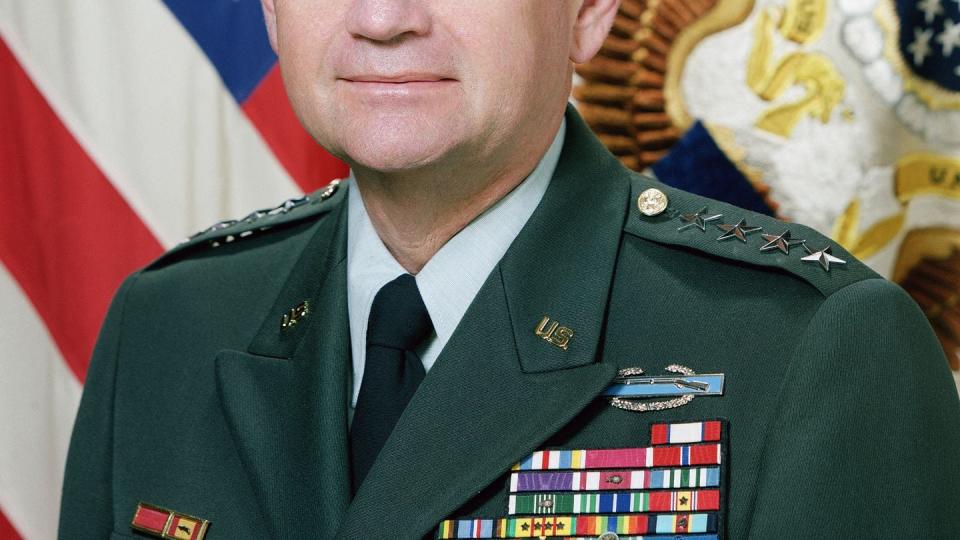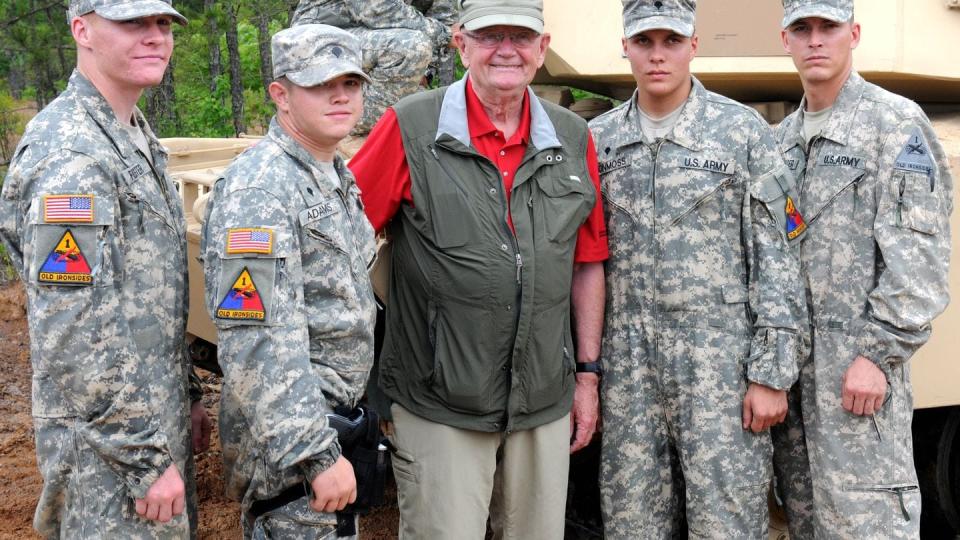Gordon Sullivan, once dual-hat Army chief and secretary, dies at 86
- Oops!Something went wrong.Please try again later.
Retired Gen. Gordon R. Sullivan, who served as the Army’s 32nd chief of staff from 1991 to 1995 and oversaw pivotal post-Cold War transformations, died Jan. 2 at the age of 86, according to the Association of the U.S. Army.
Sullivan, who began his Army career as an armor lieutenant in 1959, is the only person in modern Army history to have served simultaneously as the service’s chief of staff and acting Army secretary. President Bill Clinton tapped Sullivan as the acting secretary of the Army for a three month period in 1993 after the last person holding that post, John W. Shannon, was caught shoplifting from the base exchange at Fort Myer, Virginia.
Asked about the experience in a 2002 oral history interview, Sullivan quipped that “life was very easy because I didn’t have a secretary of the Army between me and the secretary of defense.”
Born on Sept. 25, 1937, the Quincy, Massachusetts, native served two tours in Vietnam — one as a combat advisor in the war’s early stages in 1962 — and commanded both the 3rd Armored Division’s 1st Brigade and the 1st Infantry Division during the 1980s. Before taking the reins as chief in 1991, Sullivan was the Army G-3 and the service’s vice chief of staff.

His tenure as chief was marked by significant troop cuts — a 600,000 soldier reduction in the years following Desert Storm — and political controversy over gender integration and the introduction of the “Don’t Ask Don’t Tell” policy that permitted closeted gays and lesbians to serve in the military. Sullivan, who opposed women in combat arms units, told interviewers in 2002 that in retrospect, he believed “the Army did not to a very good job of executing” gender-integrated training policies. Amid these other efforts, the Sullivan-era Army also deployed soldiers for contingency operations in Somalia, Haiti, Rwanda and the Balkans.
After retiring from the Army in 1995, Sullivan remained involved with the military community. He became the president and chief executive of the Association of the U.S. Army in 1998, holding the post until 2016. The retired four-star was the chairman of the Army Historical Foundation’s board during its campaign to establish the National Museum of the U.S. Army, which opened in 2020 at Fort Belvoir, Virginia. He also served as the board president of his alma mater — Norwich University.

Sullivan also led a Center for Naval Analyses advisory board that oversaw a 2007 report on the threat that climate change poses to U.S. national security.
But despite his myriad achievements, Sullivan long was haunted by the 1993 Battle of Mogadishu and the 19 soldiers killed there — despite his lack of direct operational control.
“I think about Mogadishu a lot. I ask myself if I could have done anything to prevent the events of 3-4 October 1993,” he told his 2002 interviewers during the final taping of what became a 300-plus page oral history. “I expect I will continue to do so for the rest of my life … the great unknown to me was whether I could have taken a more assertive stance, which would have … changed events before they happened.”
In spite of any lingering regret, Sullivan — whose name adorns the Army’s top tank crew competition, the Sullivan Cup — continued with his transformation of the Army, which included widespread development of new soldier-level technology designed to reduce fratricide and increase battlefield awareness.
“It is tough to get beat up and to go back into the fight. But that is what you get paid for,” he concluded in his 2002 interviews. “That is what people expect of you — just to keep fighting, be human, acknowledge your own failings and the fact that you are not omnipotent.”
Sullivan was preceded in death by his wife, Miriam Gay Loftus, who also hailed from Quincy. He had three children: John, Mark and Elizabeth.
Correction: An earlier version of this story misttated the division in which Sullivan completed his brigade command.

